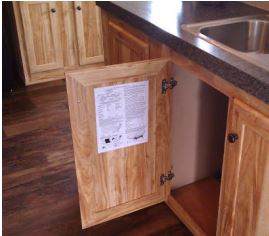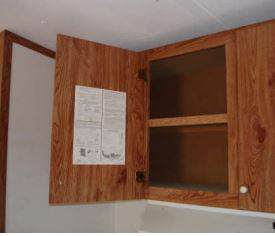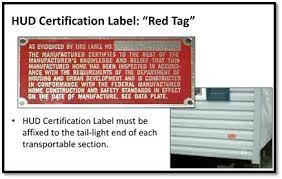Manufactured, modular or mobile home --and what's the difference?
- Dennis Hughes NMLS #178729
- Jun 13, 2024
- 3 min read
Updated: Jan 23
The manufactured home loan process is more complex than financing a traditional site-built home.

A manufactured home is better known by names like mobile home, double-wide or trailer. It is built in a factory and trucked to a homesite, just like a modular home, but that’s where the similarity between the two ends.
A manufactured home is typically built at a factory/plant in 1 to 3 sections (think double-wide or 2 units as the typical manufactured home) on a steel I-beam frame, with axles and tires attached underneath, a welded steel tongue towing-assembly at the front, and the units are towed to the homesite on it’s own wheels by truck. The tongue and wheels are typically removed when the home is installed (these are required to be removed for every traditional loan program). On older, non compliant manufactured homes, you will sometimes see the undercarriage and axles still in place, with only the tires removed.
Manufactured homes are built to a national building code established by the U.S. Department of Housing and Urban Development (HUD) in 1976 and these codes are regularly upgraded. Per HUD's specifications, the home will have a HUD Data Plate affixed somewhere inside, usually on the wall of the master bedroom closet or inside the cabinet door under the kitchen sink. It lists the manufacturer info, date of manufacture, label and serial numbers of the units and all the construction performance specs of the home.
HUD also requires a factory/plant installed 2x4 inch metal HUD Tag listing the label number (often called the “HUD or Red tag”) to be placed about a foot up from the bottom and a foot from the edge on the back rear end section of each unit. These tags start out as bright red (faded over time) or occasionally with older tags a lighter color. In addition, the unit's serial number is stamped into the metal frame-- typically on the undercarriage I-beam/frame or front frame of a unit. Time and wear can often obscure these identifying items.
Here are some examples below.
A modular home is built using essentially the same building materials
and construction methods as a site-built home, except that is it constructed in transportable sections that are loaded on trucks for delivery to the homesite to be connected together.

Some modular homes are built over a steel I-beam frame similar to manufactured homes, and called “on-frame” modulars. Off-frame modular homes are more common. There is a stem wall, or piers and elevated beams, constructed at the site before arrival of an off-frame home, while some on-frame homes are installed on piers the same as manufactured/mobile homes.
Modular homes with rare exceptions are treated just like site built homes by lenders so the special rules that apply to manufactured homes don't apply to modular. In the picture is an example of a modular home being installed in sections with a crane.
Mobile homes are factory built home constructed prior to 1976 and were not required to be built to HUD codes and thus are ineligible for traditional home lending. They will typically have different characteristics than manufactured homes built to HUD 1976 standards with little to no roof pitch, small/no eaves/overhang and often the

interior walls have late 1960s early 1970s style wood paneling--and the interior roof is typically flat with little to no arch. In the picture is an example of an older mobile home.
Only a handful of specialty lenders will finance mobile homes and if you locate one, you can expect high rates and fees along with very unique non-standard qualifying criteria. These property types when sold are often a cash purchase or seller financed.















